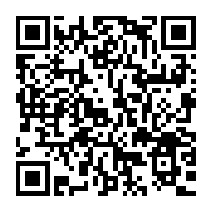Om Mani Padme Hum 唵嘛呢叭咪吽
Om Mani Padme Hum 唵嘛呢叭咪吽
A "mantra" is a sound, syllable, word, or group of words that is considered capable of "creating transformation" (spiritual transformation).Its use and type varies according to the school and philosophy associated with the mantra.Mantras (Devanāgarī मन्त्र) originated in the Vedic tradition of India, becoming an essential part of the Hindu tradition and a customary practice within Buddhism, Sikhism, and Jainism.
Kūkai (空海, or Kōbō-Daishi 弘法大師 'The Grand Master Who Propagated the Buddhist Teaching', 774--835, was a Japanese monk, civil servant, scholar, poet, and artist, founder of the Shingon or "True Word" school of Buddhism) suggests that all sounds are the voice of the Dharmakaya Buddha.
The Hindu Upanishadic and Yogic thought these sounds are manifestations of ultimate reality, in the sense of sound symbolism postulating that the vocal sounds of the mantra have inherent meaning independent of the understanding of the person uttering them.
Nevertheless, such understanding of what a mantra may symbolize or how it may function differs throughout the various traditions and also depends on the context in which it is written or sounded.
Probably the most famous mantra of Buddhism is "Om mani padme hum", the six syllable mantra of the Bodhisattva of compassion Avalokiteśvara (Tibetan: Chenrezig, Chinese: Guanyin). This mantra is particularly associated with the four-armed Shadakshari form of Avalokiteśvara.
In Tibet, this mantra is on the lips of many Tibetans all their waking hours, the mantra is pronounced "Om mani peme hum".
The chanting of the "Mantras" or "Sutra" are "mind protectors", it clears the mind from running thoughts for the mind to think clearly and to see things clearly as it is. Chanting does clear one's mind but all other forms of changes depend greatly on the "doing of one's action" or "karma" and the chosen path of oneself.
______________________________________
I do not own any copyright of the audio track.
My purpose for up loading this on to YouTube
is to share this Great Mantra/Sutra with
the world and for those who search for it.
My deepest sincere Thank You to all for
allowing me to accomplish this task in life.
May all be bless with merits ~
Amitabha
阿彌陀佛
Namasté ~
A "mantra" is a sound, syllable, word, or group of words that is considered capable of "creating transformation" (spiritual transformation).Its use and type varies according to the school and philosophy associated with the mantra.Mantras (Devanāgarī मन्त्र) originated in the Vedic tradition of India, becoming an essential part of the Hindu tradition and a customary practice within Buddhism, Sikhism, and Jainism.
Kūkai (空海, or Kōbō-Daishi 弘法大師 'The Grand Master Who Propagated the Buddhist Teaching', 774--835, was a Japanese monk, civil servant, scholar, poet, and artist, founder of the Shingon or "True Word" school of Buddhism) suggests that all sounds are the voice of the Dharmakaya Buddha.
The Hindu Upanishadic and Yogic thought these sounds are manifestations of ultimate reality, in the sense of sound symbolism postulating that the vocal sounds of the mantra have inherent meaning independent of the understanding of the person uttering them.
Nevertheless, such understanding of what a mantra may symbolize or how it may function differs throughout the various traditions and also depends on the context in which it is written or sounded.
Probably the most famous mantra of Buddhism is "Om mani padme hum", the six syllable mantra of the Bodhisattva of compassion Avalokiteśvara (Tibetan: Chenrezig, Chinese: Guanyin). This mantra is particularly associated with the four-armed Shadakshari form of Avalokiteśvara.
In Tibet, this mantra is on the lips of many Tibetans all their waking hours, the mantra is pronounced "Om mani peme hum".
The chanting of the "Mantras" or "Sutra" are "mind protectors", it clears the mind from running thoughts for the mind to think clearly and to see things clearly as it is. Chanting does clear one's mind but all other forms of changes depend greatly on the "doing of one's action" or "karma" and the chosen path of oneself.
______________________________________
I do not own any copyright of the audio track.
My purpose for up loading this on to YouTube
is to share this Great Mantra/Sutra with
the world and for those who search for it.
My deepest sincere Thank You to all for
allowing me to accomplish this task in life.
May all be bless with merits ~
Amitabha
阿彌陀佛
Namasté ~
- Category
- Buddhist music







